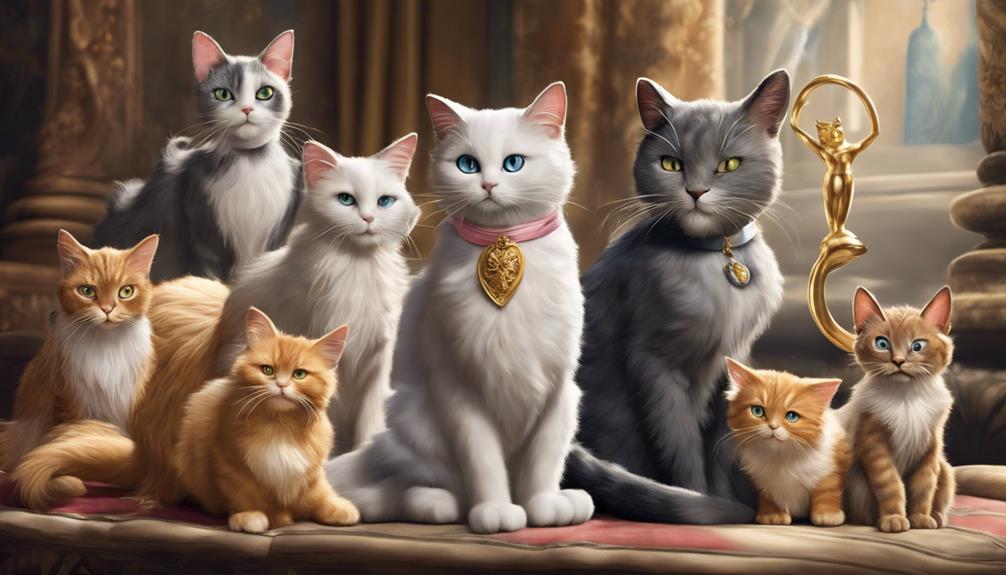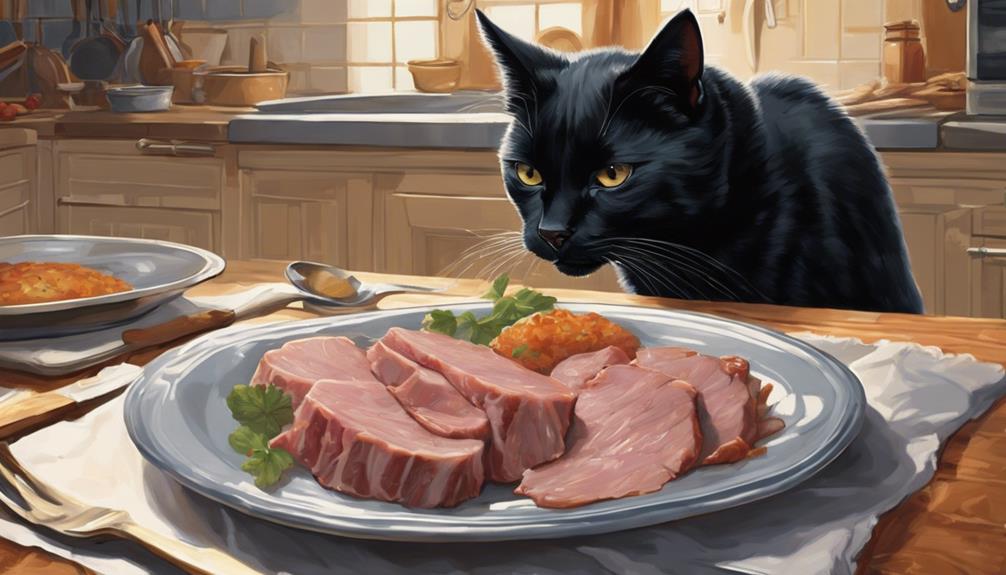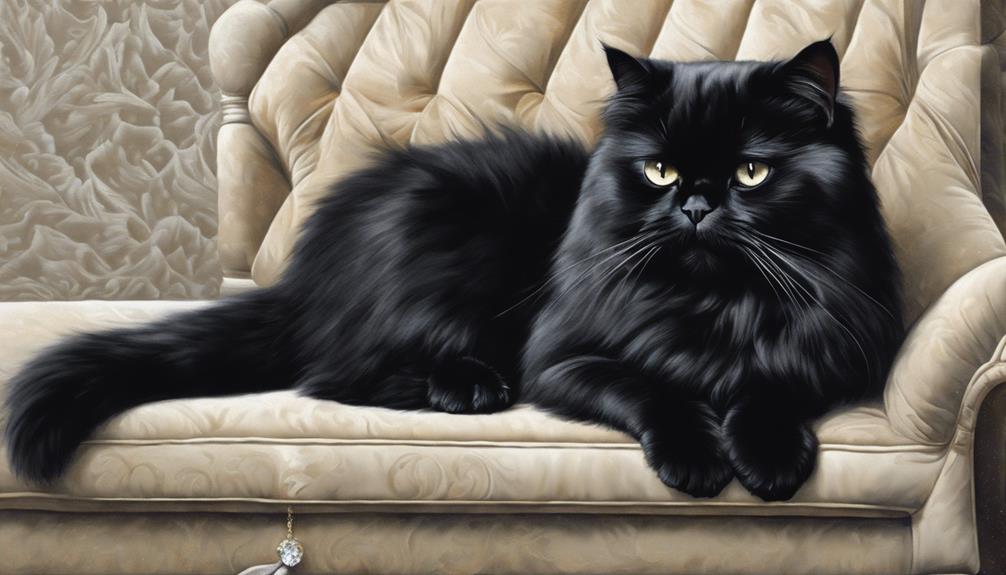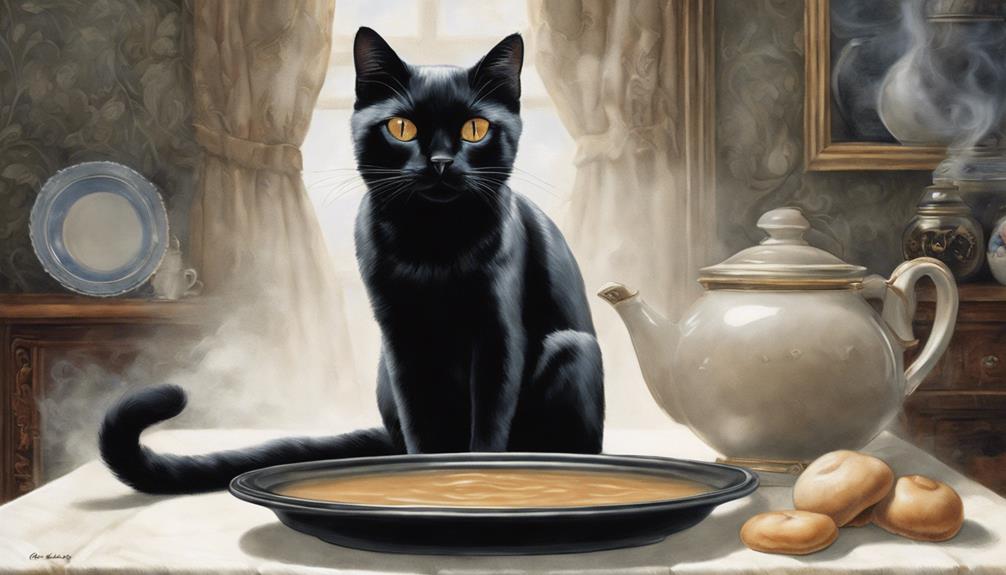In the realm of movies, iconic female cats have captivated audiences with their memorable roles. From Holly Golightly's Cat in "Breakfast at Tiffany's" symbolizing companionship to Church bringing sinister vibes in "Pet Sematary," these feline characters steal the show. Jonesy in "Alien" provides comfort in a sci-fi horror setting, while Goose shines in "Captain Marvel" with adorableness and plot importance. Films like "The Adventures of Milo and Otis" and "Harry Potter" also feature beloved cat characters worth mentioning. Each of these famous female cats brings a unique charm to their respective films, adding depth and entertainment.
Key Takeaways
- Holly Golightly's Cat from "Breakfast at Tiffany's" is an iconic feline character symbolizing companionship.
- Church from "Pet Sematary" is a dark and transformative cat with sinister consequences in the narrative.
- Jonesy from "Alien" provides comfort and hope amid extraterrestrial danger, becoming a symbol of humanity.
- Milo and Otis from "The Adventures of Milo and Otis" showcase the escapades and talents of animal actors.
- Goose from "Captain Marvel" steals the spotlight with adorable appearance, crucial plot role, and unique origin from comics.
Breakfast at Tiffanys (1961)
In 'Breakfast at Tiffany's' (1961), we meet Holly Golightly, a flighty and cat-obsessed character who shares a special bond with her ginger tabby named Cat.
Cat, the feline companion of Holly Golightly, isn't just any ordinary cat in the movie but a symbol of companionship and attachment. Holly affectionately refers to Cat as her 'poor slob without a name,' showcasing her deep connection to the ginger tabby.
Throughout the film, the relationship between Holly Golightly and Cat highlights themes of love, freedom, and the search for identity. Cat's presence not only adds warmth and humor to the storyline but also reflects Holly's own feelings of isolation and longing for connection.
As we follow the adventures of Holly and Cat in 'Breakfast at Tiffany's,' we're drawn into a world where love knows no bounds, even between a quirky socialite and her beloved ginger tabby.
Pet Sematary (1989 and 2019)

Church, the iconic feline character in both the original 1989 movie and the 2019 remake of Pet Sematary, embodies loyalty and eeriness as it undergoes a dark transformation after burial in the mysterious graveyard.
In the 2019 adaptation, four different cats were employed to bring Church to life, emphasizing the significance of this feline actor in the narrative. Church's presence in both versions of Pet Sematary adds a chilling and supernatural element to the story, captivating audiences with its haunting portrayal.
The cat character of Church serves as a poignant reminder of the sinister consequences that arise when the natural order of life and death is disrupted. Through its unsettling transformation, Church becomes a symbol of dread, leaving a lasting impression on viewers.
Pet Sematary continues to stand out in the realm of horror movies, largely due to the captivating performance of Church, the enigmatic and unsettling feline at the heart of the tale.
Alien (1979)

In the movie Alien (1979), Jonesy the ginger cat becomes an iconic character, influencing memorable movie moments.
Jonesy's presence not only provides comfort to the crew but also showcases the bond between humans and animals in the face of extraterrestrial danger.
The cat's role adds a unique and endearing aspect to the sci-fi horror film.
Iconic Alien Character
How did Jonesy, the ginger cat from Alien (1979), impact the atmosphere aboard the Nostromo spaceship?
Well, let's paint you a picture:
- Picture Jonesy's soft fur gently brushing against the crew's hands, offering solace in the midst of chaos.
- Imagine the soothing purrs resonating through the dimly lit corridors, a beacon of comfort in the eerie silence.
- Visualize the crew members finding moments of respite as they interacted with Jonesy, a reminder of the world beyond the spaceship's metal walls.
- Envision the subtle wag of Jonesy's tail, a small gesture that spoke volumes about the power of companionship in the face of unknown terrors.
Jonesy's presence wasn't just that of a pet; it was a symbol of hope and humanity in a world overrun by alien nightmares.
Female Cats Influence
Among the notable female cats in movies, Jonesy from Alien (1979) stands out for her impactful role aboard the Nostromo spaceship. Jonesy, the ginger cat, provided comfort and companionship to the crew, offering a sense of normalcy amidst the terror of the alien threat. Her survival instincts and agility were crucial in aiding the crew through perilous situations.
The bond between Jonesy and Ripley highlighted the importance of human-animal connections in times of crisis. Despite being a non-speaking character, Jonesy's actions and presence significantly contributed to the film's atmosphere and dynamics. The subtle interactions between Jonesy and the crew added depth to the storyline, showcasing the importance of compassion and unity in the face of danger.
Memorable Movie Moments
One standout moment in Alien (1979) that continues to captivate audiences is the intense confrontation between Ripley and the alien in the cramped confines of the spaceship.
Ripley's heart races as she faces the sleek, otherworldly Alien in a battle of survival. The Nostromo's dimly lit corridors amplify the tension, echoing with the sound of Ripley's quickened breaths. The Alien's hisses pierce the silence, signaling imminent danger to Ripley and her crewmates. Jonesy, the loyal ginger cat, watches from a safe distance, a silent witness to the unfolding chaos, offering a sense of companionship amidst the terror.
This scene not only highlights the film's suspense but also emphasizes the importance of companionship, even in the face of unimaginable threats.
The Adventures of Milo and Otis (1989)
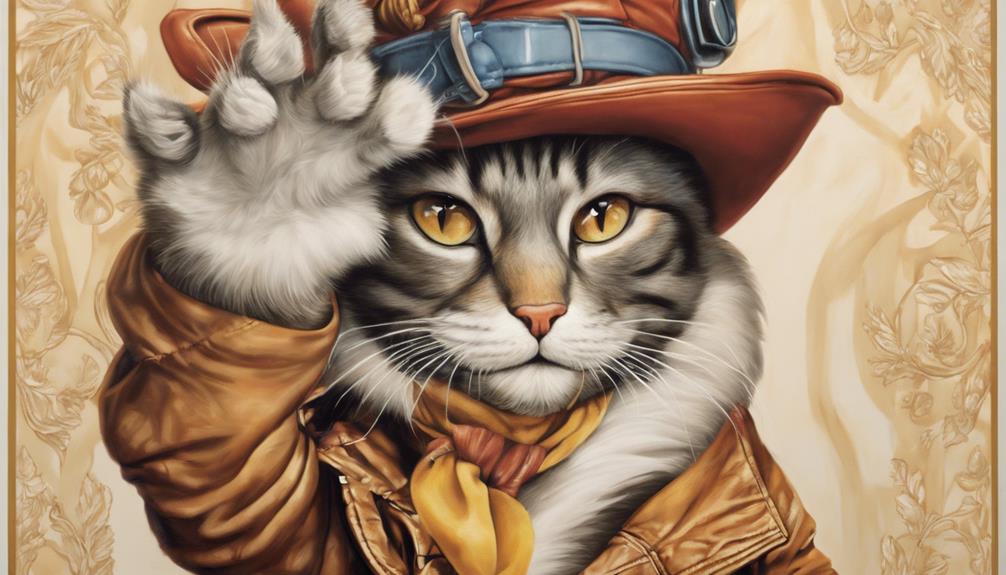
'The Adventures of Milo and Otis' (1989) follows the captivating escapades of a cat named Milo and a pug named Otis, originating from a Japanese film and gaining cult status despite controversies surrounding animal welfare during production.
This family-friendly movie showcases the incredible talent of animal actors, delivering impressive stunts and heartwarming performances that have captured the hearts of viewers over the years.
Despite facing allegations of animal cruelty, the film remains a beloved choice for animal lovers due to the endearing moments shared between Milo the cat and Otis the pug.
The movie's mix of adventure, friendship, and heartwarming scenes has solidified its place as a classic in the realm of cat movies.
Fans of animal-centric films will appreciate the genuine connection between the two main characters, making 'The Adventures of Milo and Otis' a must-watch for those seeking a wholesome and entertaining movie experience.
Captain Marvel (2019)
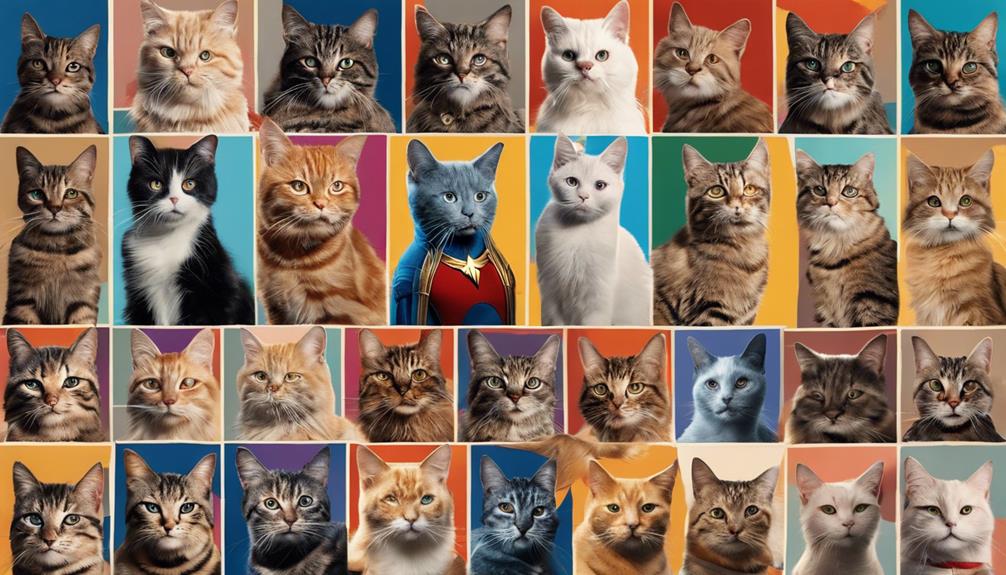
Goose steals the spotlight in Captain Marvel (2019), showcasing his adorable appearance and unexpected abilities as a Flerken.
- As a Flerken, Goose resembles an ordinary cat but possesses dangerous abilities that surprise and captivate audiences.
- Throughout the movie, Goose's actions aren't only adorable but also crucial to the plot, making him a beloved character among fans.
- The character of Goose is actually based on Chewie from the Captain Marvel comics, with some unique modifications that add depth to his role.
- Goose's presence in the film extends beyond just being a cute pet; he plays a significant part in key moments, solidifying his importance in the storyline.
Fans have embraced Goose with open arms, leading to merchandise and widespread popularity within the Marvel Cinematic Universe. His charm and unexpected nature make him a standout character in Captain Marvel, adding a delightful twist to the superhero narrative.
The Princess Diaries (2001)
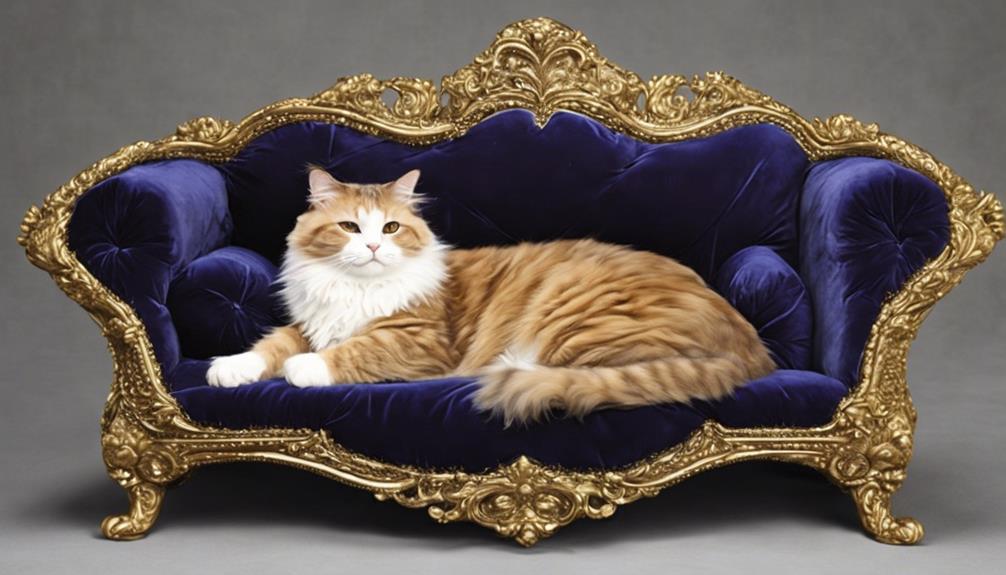
Playing a pivotal role in The Princess Diaries (2001), Fat Louie emerges as the iconic male cat known for his playful and regal demeanor alongside Mia Thermopolis. As Mia's royal companion, Fat Louie steals scenes with his charming presence, adding humor and charisma to the film. His memorable moments have made him a fan favorite, captivating audiences with his endearing antics.
Whether lounging in regal fashion or playfully engaging with Mia, Fat Louie's unique personality shines through, creating a special bond with viewers. The dynamic between Mia Thermopolis and Fat Louie showcases a heartwarming connection that adds depth to the storyline, making their interactions a delightful aspect of the movie.
With his expressive feline features and lovable antics, Fat Louie brings a touch of whimsy and joy to The Princess Diaries, solidifying his place as a beloved character in the hearts of many.
Inside Llewyn Davis (2013)
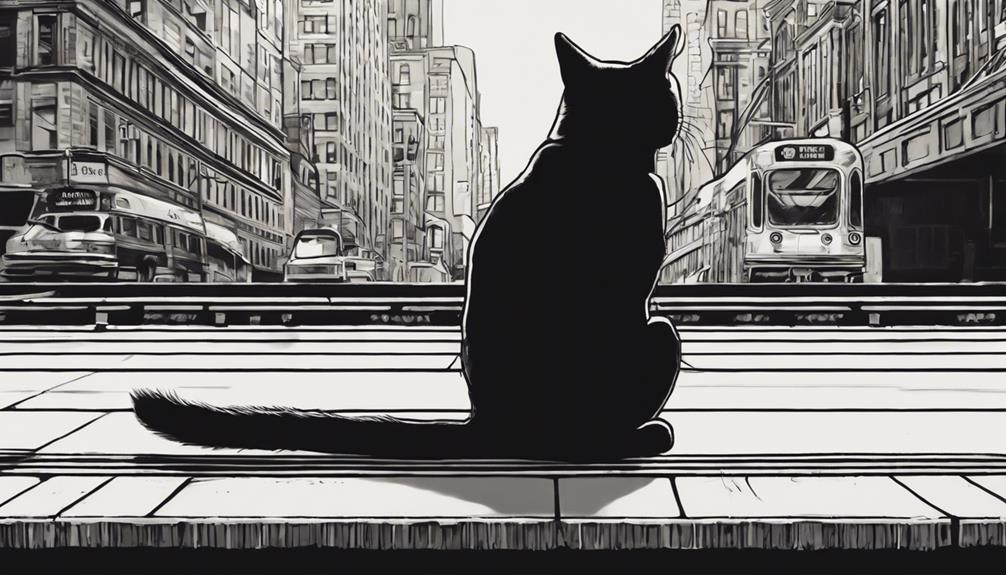
In Inside Llewyn Davis (2013), a cat named Ulysses takes on a significant role, symbolizing the struggles and journey of the film's protagonist. Ulysses, portrayed by multiple look-alike cats, seamlessly weaves through the storyline, adding depth to the relationship dynamics between characters.
Here's a glimpse into Ulysses' impact:
- Ulysses, with his enigmatic gaze, mirrors the internal turmoil of Llewyn Davis, reflecting his inner conflicts and uncertainties.
- The feline's independent nature resonates with Llewyn's own sense of isolation and longing for connection in the bustling cityscape.
- Through playful interactions with Ulysses, viewers witness moments of vulnerability and tenderness in Llewyn that are otherwise hidden beneath his tough exterior.
- Ulysses' presence acts as a silent observer, shedding light on the unspoken emotions and intricate ties that bind the characters together in this poignant tale.
The subtle yet profound role of Ulysses adds a layer of complexity to the narrative, making him an integral part of the emotional tapestry within Inside Llewyn Davis.
Kikis Delivery Service (1989)
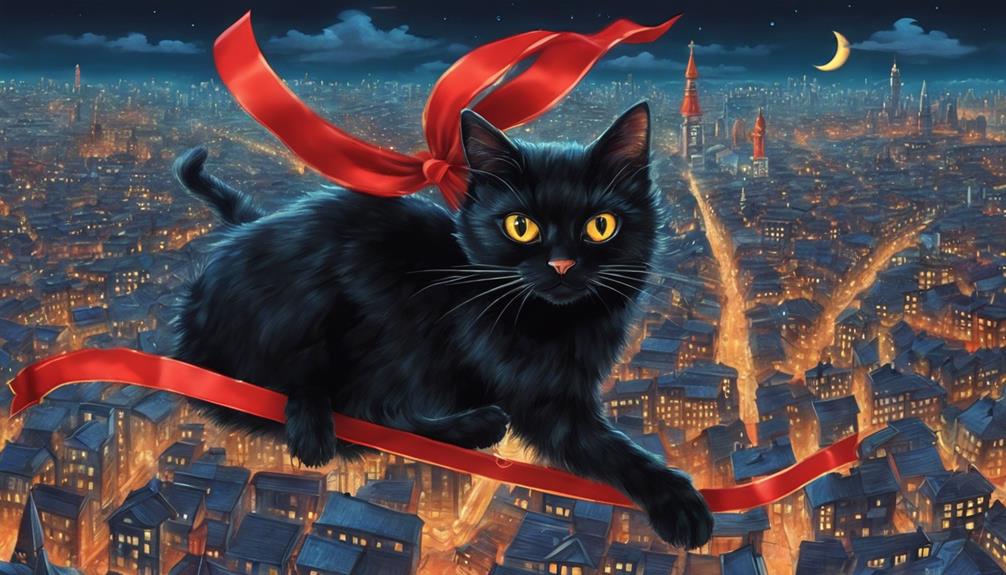
In 'Kiki's Delivery Service' (1989), Kiki's magical flying broom steals the show, but let's not forget about Jiji, the sassy cat who adds humor and sass to the storyline.
The dynamic between Kiki and Jiji showcases a bond that goes beyond words, highlighting the importance of companionship in the magical world they navigate together.
Jiji's witty and supportive nature complements Kiki's journey, making them a memorable duo in this heartwarming tale.
Kikis Magical Flying Broom
Kiki's magical flying broom in 'Kiki's Delivery Service' (1989) serves as a vital tool for the young witch's journey of self-discovery and growth, enabling her to navigate the skies with independence and determination.
- As Kiki zooms through the clouds on her broom, the wind tousles her hair, emphasizing her freedom.
- The broom's sleek design reflects Kiki's elegance and grace as she soars above the picturesque landscapes.
- With each delivery she makes on her broom, Kiki gains confidence in her abilities and strengthens her sense of self.
- The broom's enchanting flight symbolizes Kiki's transition from uncertainty to embracing her magical heritage and purpose.
Kiki's magical flying broom not only aids her in her deliveries but also acts as a metaphor for her personal journey towards maturity and self-realization.
Jiji the Sassy Cat
Jiji the sassy black cat, known for his witty remarks and loyal companionship to Kiki, plays a significant role in the animated film 'Kiki's Delivery Service' (1989). Voiced by the talented Phil Hartman in the English dub, Jiji's humorous banter with Kiki adds depth and humor to the story.
Throughout the movie, Jiji helps Kiki adapt to her new surroundings and supports her in her delivery service endeavors. His charming personality and strong bond with Kiki make him a standout character, showcasing the importance of animal companionship and friendship.
Jiji's presence not only provides comedic relief but also underscores the theme of loyalty and support. In the world of animated films, Jiji has become an iconic and beloved feline figure, cherished for his role in Kiki's journey.
Harry Potter Series
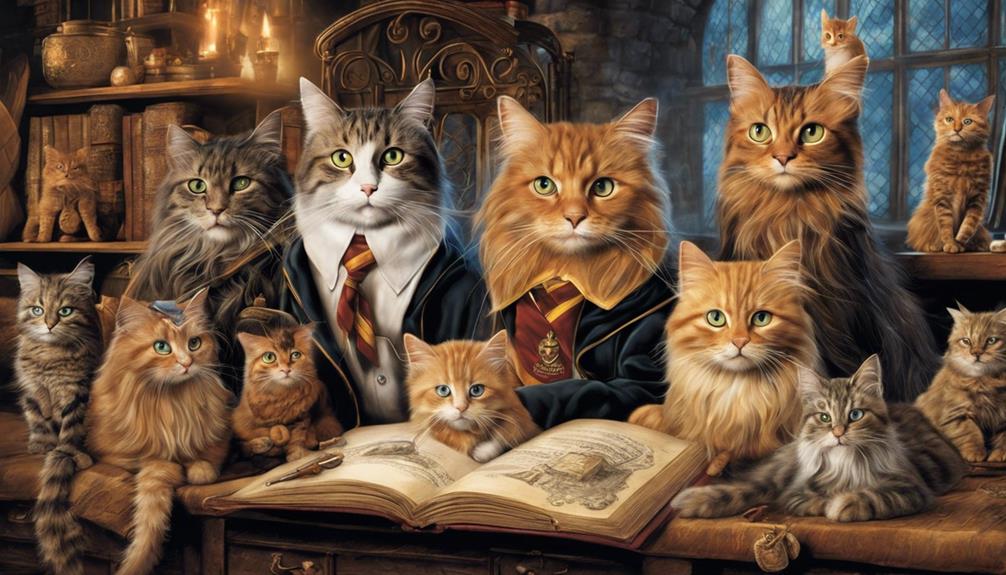
Half-Kneazle Crookshanks, Hermione's loyal and intelligent cat in the Harry Potter series, plays a crucial role in exposing Peter Pettigrew's true identity in the Prisoner of Azkaban. Crookshanks' distinctive appearance with bushy fur, squashed face, and piercing amber eyes adds to his mysterious charm.
Here are some fascinating facts about Crookshanks:
- Sharp Intelligence: Crookshanks is known for his exceptional intelligence, which aids Hermione and the gang in solving intricate mysteries.
- Loyalty to Hermione: Crookshanks displays unwavering loyalty to Hermione, supporting her through thick and thin in their magical adventures.
- Pottermore Mention: J.K. Rowling herself highlighted Crookshanks' significance in aiding Sirius Black during the tumultuous events of the Prisoner of Azkaban.
- Instrumental Role: Beyond being a mere pet, Crookshanks proves to be an instrumental character in the series by helping unveil the true intentions of Peter Pettigrew, ultimately changing the course of events in the wizarding world.
Homeward Bound: The Incredible Journey (1993)

Sassy, the determined and loyal feline from Homeward Bound: The Incredible Journey (1993), joins two dogs on a cross-country adventure in search of their family.
Voiced by Sally Field, Sassy's character brings humor and excitement to the heartwarming journey.
Her resourcefulness and interactions with the dogs make her a beloved and memorable part of the film.
Top Female Cat Characters
Embarking on a cross-country journey with two dogs, the tenacious and adventurous female cat in 'Homeward Bound: The Incredible Journey' (1993) adds a unique charm to the heartwarming animal adventure. Voiced by Sally Field, Sassy's determination and courage make her a memorable character in the film. Here's why she stands out:
- Sassy fearlessly navigates through various challenges, showcasing her bravery.
- Her witty remarks and sassy attitude bring humor and liveliness to the group dynamics.
- Sassy's interactions with the dogs and other animals highlight her caring nature.
- Sally Field's vocal performance breathes life into Sassy, giving depth to the feline character's personality.
Homeward Bound Representation
Representing a tale of friendship and determination, 'Homeward Bound: The Incredible Journey (1993)' portrays the inspiring journey of Sassy, a tenacious cat, and her loyal canine companions searching for their family across the country.
Sassy's unwavering determination and resourcefulness shine through as she overcomes obstacles alongside her canine pals. Voiced by the talented Sally Field, Sassy's character adds humor and sass to the group dynamic, making her a beloved part of this heartwarming family film.
Throughout the perilous journey, Sassy's loyalty and courage are evident, showcasing her as a standout character who embodies the spirit of resilience and companionship. This classic movie captures the essence of unity and perseverance, making Sassy a memorable feline heroine in the world of cinema.
Frequently Asked Questions
Who Is the Most Famous Fictional Cat?
We believe the most famous fictional cat is Garfield. Created in 1978 by Jim Davis, Garfield's known for loving lasagne, hating Mondays, and delivering witty sarcasm. Appearing in comics, TV, and movies, Garfield's an enduring cultural icon.
What Is the Most Famous Cat in Hollywood?
We believe the most famous cat in Hollywood is Jonesy from 'Alien' (1979). Jonesy, an orange tabby, brings comfort and tension in the sci-fi horror film. His loyalty and unpredictability make him iconic, enhancing the storyline.
Who Is the Famous Crazy Cat Lady?
We know the famous crazy cat lady you're curious about. She's an iconic character, deeply entwined with feline companions. Her eccentricity and love for cats captivate us all. Let's uncover her intriguing story together.
Who Is the Most Famous Cat of All Time?
We believe the most famous cat of all time would be Garfield. He's iconic for his love of lasagne and disdain for Mondays, charming audiences with his wit and humor in movies, TV shows, and comics.
Conclusion
In the world of movies, female cats have left a lasting paw print on our hearts. From the iconic Holly Golightly's feline companion in 'Breakfast at Tiffany's' to the mysterious Jonesy in 'Alien,' these purr-fect stars have stolen the show.
Just like cats have nine lives, these famous feline characters have brought joy and entertainment to audiences of all ages. Their whiskers may be fictional, but their impact is very real.
